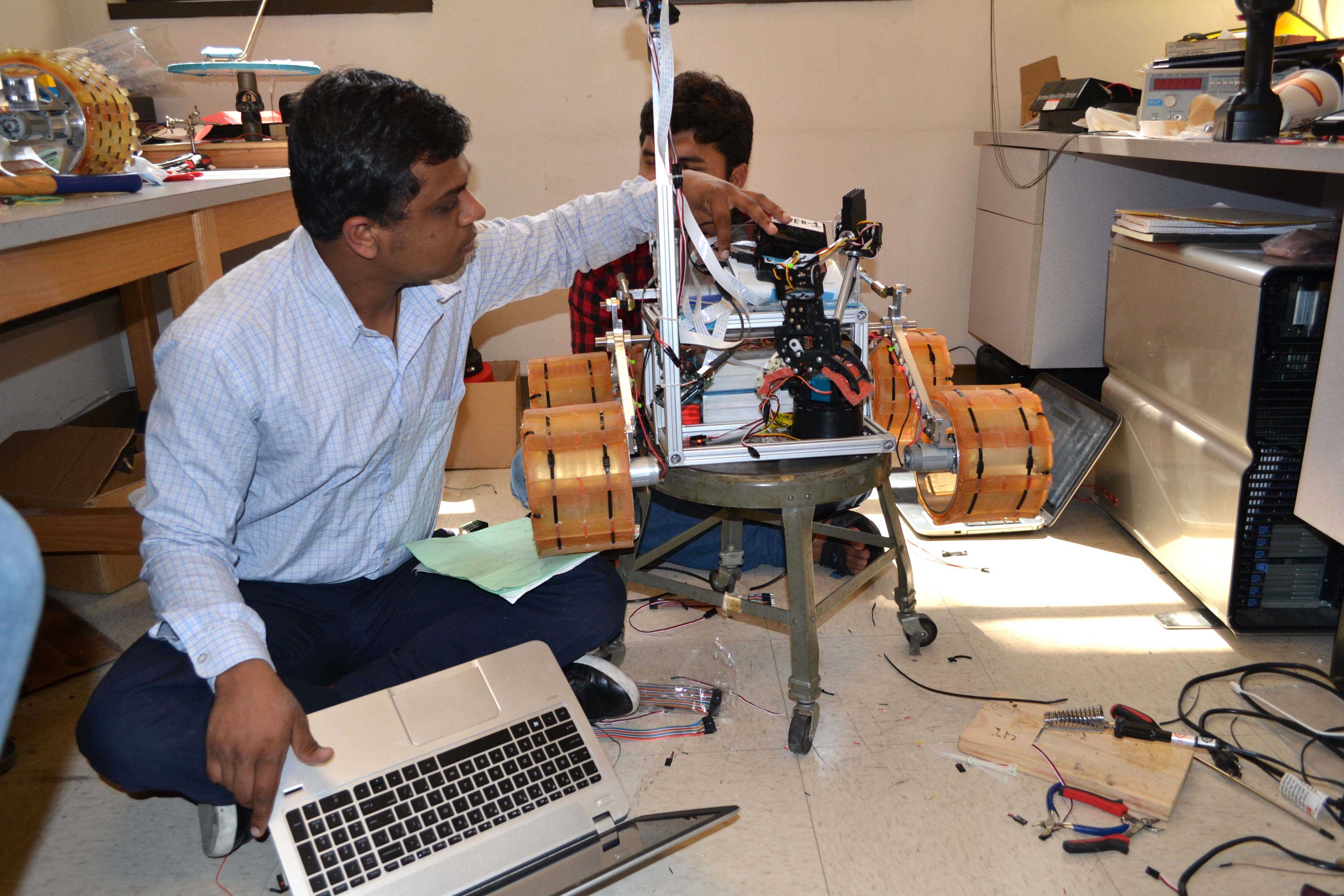Nestled in a workspace inside Engineering Building 2, students anxiously plucked wires from Gemini Omega – hoping to find a misconnection Wednesday afternoon before shipping the machine off the following night.
After nearly nine months in the making, the engineering students’ rover will be sent to Texas on Thursday, to compete in the fifth annual Revolutionary Aerospace Systems Concepts – Academic Linkage Robo-Ops Competition at the NASA Johnson Space Center in Houston on June 2-4.
Amidst trying to figure out which one of the wires was creating the problem, the wheels of the vehicle began to move.
“He’s not even pushing any buttons,” said Praveen Shankar, a mechanical and aerospace engineering assistant professor. “[The rover is] moving by itself!”
Shankar said they should have the rover functioning properly before it gets shipped.
Jorge Vega, a senior mechanical engineering major said the work for this competition started in September. The team is comprised of over 25 students, Vega said the project initially only had three students collaborating.
“Here you get your hands dirty with screwdrivers, bolts and nuts,” Vega said. “You need to know how to use tools.”
According to RASC-AL’s website NASA gave them $5,000 to build a prototype, and another $5,000 once they had shown proof of concept.
Assistant professor Shankar will travel with Vega and two other students next week for the competition.
Roman Serna, a senior aerospace engineer major, said he was one of the first people involved with the project and is excited to see the rest of the contenders’ creations in person.
“I am really hoping for first place, especially because we have two rovers going,” Serna said. “This is the first time anyone [has done] two rovers. Everyone has only ever done one. The rules say you can have a swarm of rovers.”
Among some of the challenges the rovers, Gemini Alpha and Gemini Omega, will face include maneuvering different types of terrain and collecting rocks distributed throughout the course; Serna also said the rovers will be operated by members of their team on campus while the rovers are in Texas.
The rovers entered can only be a meter wide, a meter long and a half a meter tall; there is also a weight restriction of 45 kilograms according to RASC-AL’s website. Vega said the team has met the dimension restrictions and each rover is approximately 16 kilograms.
“The lightest rovers in the competition get to go at the end [of the challenge],” Vega said. “It’s an advantage because we would have already seen the competition and what they did wrong.”
Serna said that when using materials every detail had to be considered to meet requirements and restrictions.
“You never have a finished product,” Serna said. “Because you always find a way to do things better.”
Eight universities nationwide will participate in the competition. Other schools include San Jose State University, Virginia Tech and Massachusetts Institute of Technology according to RASC-AL’s website.
“I like this way better than sitting in a classroom and reading my notes and taking an exam,” Vega said. “It’s very interesting how you apply what you learn in the classroom when you are actually building this.”




